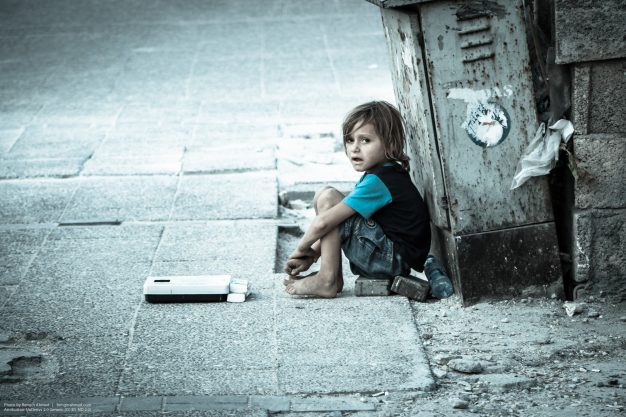
Child labour rises to 160 million – first increase in two decades
Nine million additional children are at risk as a result of COVID-19 pandemic, say the International Labour Organization and UNICEF.
The number of children in child labour has risen to 160 million worldwide – an increase of 8.4 million children in the last four years – with millions more at risk due to the impacts of COVID-19, according to a new joint report by the two child rights campaigning bodies.
Child Labour: Global estimates 2020, trends and the road forward – released to mark World Day Against Child Labour on June 12 – warns that progress to end child labour has stalled for the first time in 20 years, reversing the previous downward trend that saw child labour fall by 94 million between 2000 and 2016.
The report points to a significant rise in the number of children aged five to 11 years in child labour, who now account for just over half of the total global figure. The number of children aged five to 17 years in hazardous work – defined as work that is likely to harm their health, safety or morals – has risen by 6.5 million to 79 million since 2016.
‘Break the cycle of poverty and child labour…’
“The new estimates are a wake-up call. We cannot stand by while a new generation of children is put at risk,” said ILO Director-General Guy Ryder. “Inclusive social protection allows families to keep their children in school even in the face of economic hardship. Increased investment in rural development and decent work in agriculture is essential. We are at a pivotal moment and much depends on how we respond. This is a time for renewed commitment and energy, to turn the corner and break the cycle of poverty and child labour.”
In sub-Saharan Africa, population growth, recurrent crises, extreme poverty, and inadequate social protection measures have led to an additional 16.6 million children in child labour over the past four years.
Even in regions where there has been some headway since 2016, such as Asia and the Pacific, and Latin America and the Caribbean, COVID-19 is endangering that progress.
The report warns that globally, nine million additional children are at risk of being pushed into child labour by the end of 2022 as a result of the pandemic. A simulation model shows this number could rise to 46 million if they don’t have access to critical social protection coverage.
‘Many more may be forced into the worst forms of child labour’
Additional economic shocks and school closures caused by COVID-19 mean that children already in child labour may be working longer hours or under worsening conditions, while many more may be forced into the worst forms of child labour due to job and income losses among vulnerable families.
“We are losing ground in the fight against child labour, and the last year has not made that fight any easier,” said UNICEF Executive Director Henrietta Fore. “Now, well into a second year of global lockdowns, school closures, economic disruptions, and shrinking national budgets, families are forced to make heart-breaking choices. We urge governments and international development banks to prioritise investments in programmes that can get children out of the workforce and back into school, and in social protection programmes that can help families avoid making this choice in the first place.”
According to the report, the agriculture sector accounts for 70 per cent of children in child labour (112 million) followed by 20 per cent in services (31.4 million) and 10 per cent in industry (16.5 million). Nearly 28 per cent of children aged 5 to 11 years and 35 per cent of children aged 12 to 14 years in child labour are out of school.
Child labour is also more common among boys than girls at every age. When household chores performed for at least 21 hours per week are taken into account, the gender gap in child labour narrows.
Children in child labour are also at risk of physical and mental harm. Child labour compromises children’s education, restricting their rights and limiting their future opportunities, and leads to vicious inter-generational cycles of poverty and child labour.
To reverse the upward trend in child labour, the ILO and UNICEF are calling for:
- Adequate social protection for all, including universal child benefits.
- Increased spending on quality education and getting all children back into school – including children who were out of school before COVID-19.
- Promotion of decent work for adults, so families don’t have to resort to children helping to generate family income.
- An end to harmful gender norms and discrimination that influence child labour.
- Investment in child protection systems, agricultural development, rural public services, infrastructure and livelihoods.
As part of the International Year for the Elimination of Child Labour, the global partnership Alliance 8.7, of which UNICEF and ILO are partners, is encouraging member States, business, trade unions, civil society, and regional and international organizations to redouble their efforts in the global fight against child labour by making concrete action pledges.
During a week of action from June 10-17, ILO Director-General Guy Ryder and UNICEF Executive Director Henrietta Fore will join other high-level speakers and youth advocates at a high-level event during the International Labour Conference to discuss the release of the new global estimates and the roadmap ahead.



